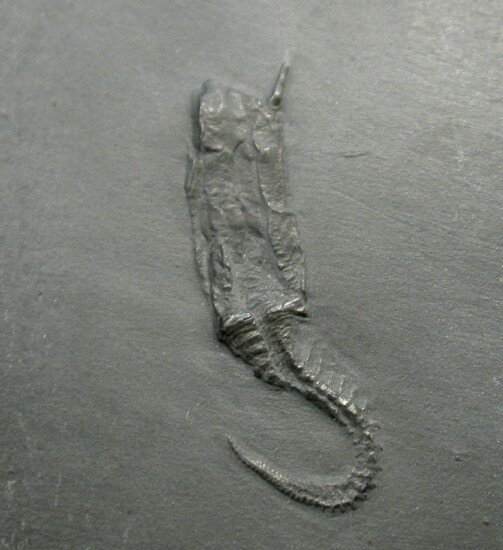Unless otherwise noted, the material on this page may be used under the terms of a
Creative Commons License.
| Homalozoa | ||
| Deuterostomia | Homalozoa |
| Metazoa | ||||
Deuterostomia
├─Vetulicolia
└─┬─Chordata
└─Ambulacraria
├─Hemichordata
└─┬─Vetulocystidae
└─Homalozoa
├─Stylophora
└─┬─Soluta
└─┬─Cincta
└─┬─Ctenocystoidea
└─┬─Helicoplacoidea
└─Echinodermata
|
Homalozoa A Passing Grade "Haplozoa" -- A Couple of Loose Ends Stylophora Soluta Cincta Ctenocystoidea Helicoplacoidea Dendrogram References |

Rhenocystis latipedunculata a Mitratan carpoid from the Early Devonian (Seigenian/Emsian) Hunsruck Slate /lagerstatten, Bundenbach Germany; Length about 3 cm, with a 2.5 cm "tail"
Image copyright The Virtual Fossil Museum
Even for a phylum as unusual as the echinoderms, the carpoids, or homalozoa as they are also known, are strange. These small (mostly only about an inch in length, although a few grew a bit larger) armoured paleozoic animals lacked the usual radial symmetry of their echinoderm cousins, which means they had a definite "front" and "rear". Even so, they resemble no animals we are familar with; their irregular flattened, asymmetric body and long "arms" and "tail" make them look more like creatures from the pages of a science fiction novel.
Homalozoans have variously been interpreted as stem-group echinoderms, stem group chordates (the calcichordates hypothesis of Jefferies), and a assemblage of groups related to Crinoids and Blastozoa. MAK120113
page MAK120113